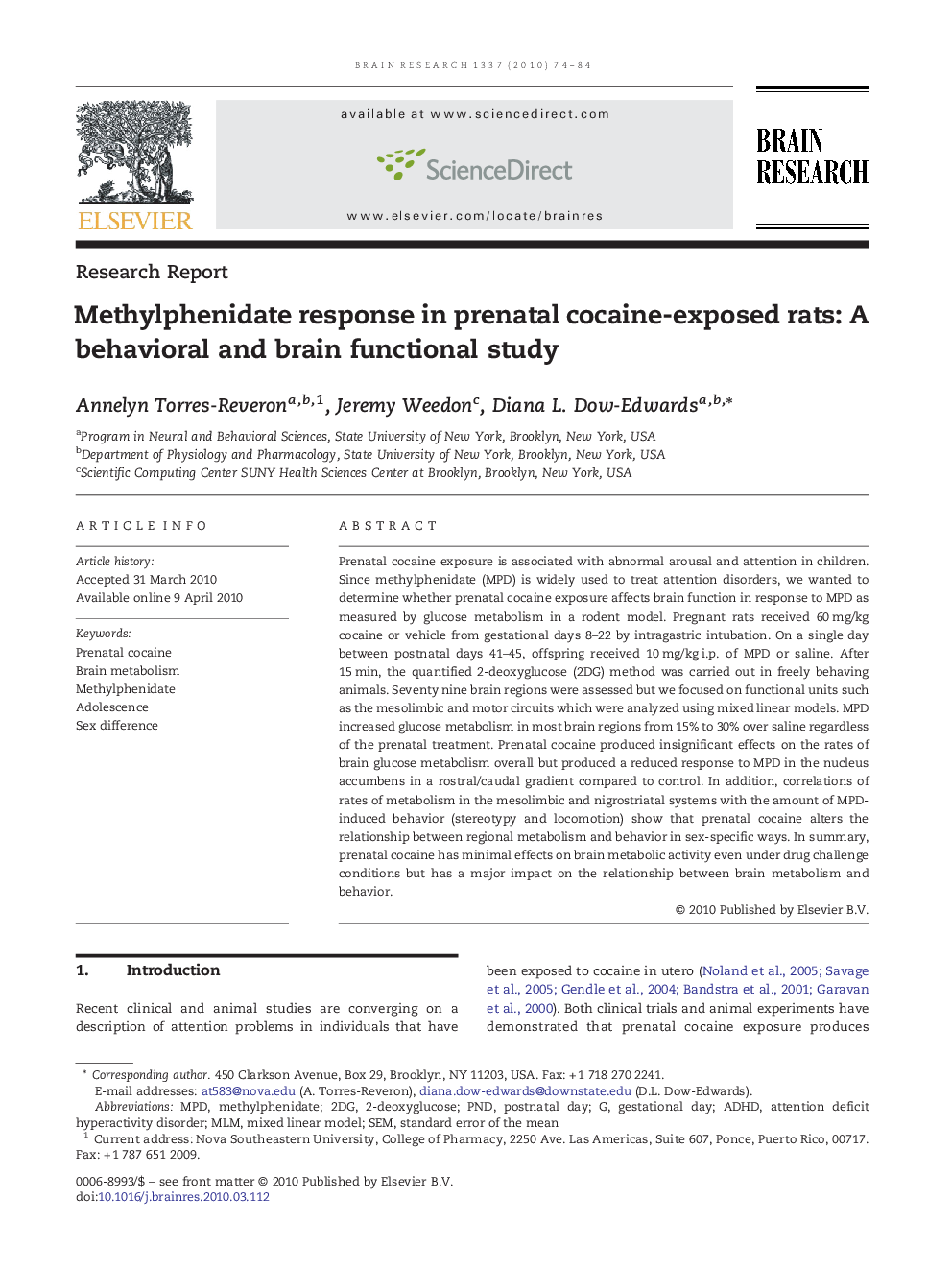| Article ID | Journal | Published Year | Pages | File Type |
|---|---|---|---|---|
| 4326911 | Brain Research | 2010 | 11 Pages |
Prenatal cocaine exposure is associated with abnormal arousal and attention in children. Since methylphenidate (MPD) is widely used to treat attention disorders, we wanted to determine whether prenatal cocaine exposure affects brain function in response to MPD as measured by glucose metabolism in a rodent model. Pregnant rats received 60 mg/kg cocaine or vehicle from gestational days 8–22 by intragastric intubation. On a single day between postnatal days 41–45, offspring received 10 mg/kg i.p. of MPD or saline. After 15 min, the quantified 2-deoxyglucose (2DG) method was carried out in freely behaving animals. Seventy nine brain regions were assessed but we focused on functional units such as the mesolimbic and motor circuits which were analyzed using mixed linear models. MPD increased glucose metabolism in most brain regions from 15% to 30% over saline regardless of the prenatal treatment. Prenatal cocaine produced insignificant effects on the rates of brain glucose metabolism overall but produced a reduced response to MPD in the nucleus accumbens in a rostral/caudal gradient compared to control. In addition, correlations of rates of metabolism in the mesolimbic and nigrostriatal systems with the amount of MPD-induced behavior (stereotypy and locomotion) show that prenatal cocaine alters the relationship between regional metabolism and behavior in sex-specific ways. In summary, prenatal cocaine has minimal effects on brain metabolic activity even under drug challenge conditions but has a major impact on the relationship between brain metabolism and behavior.
